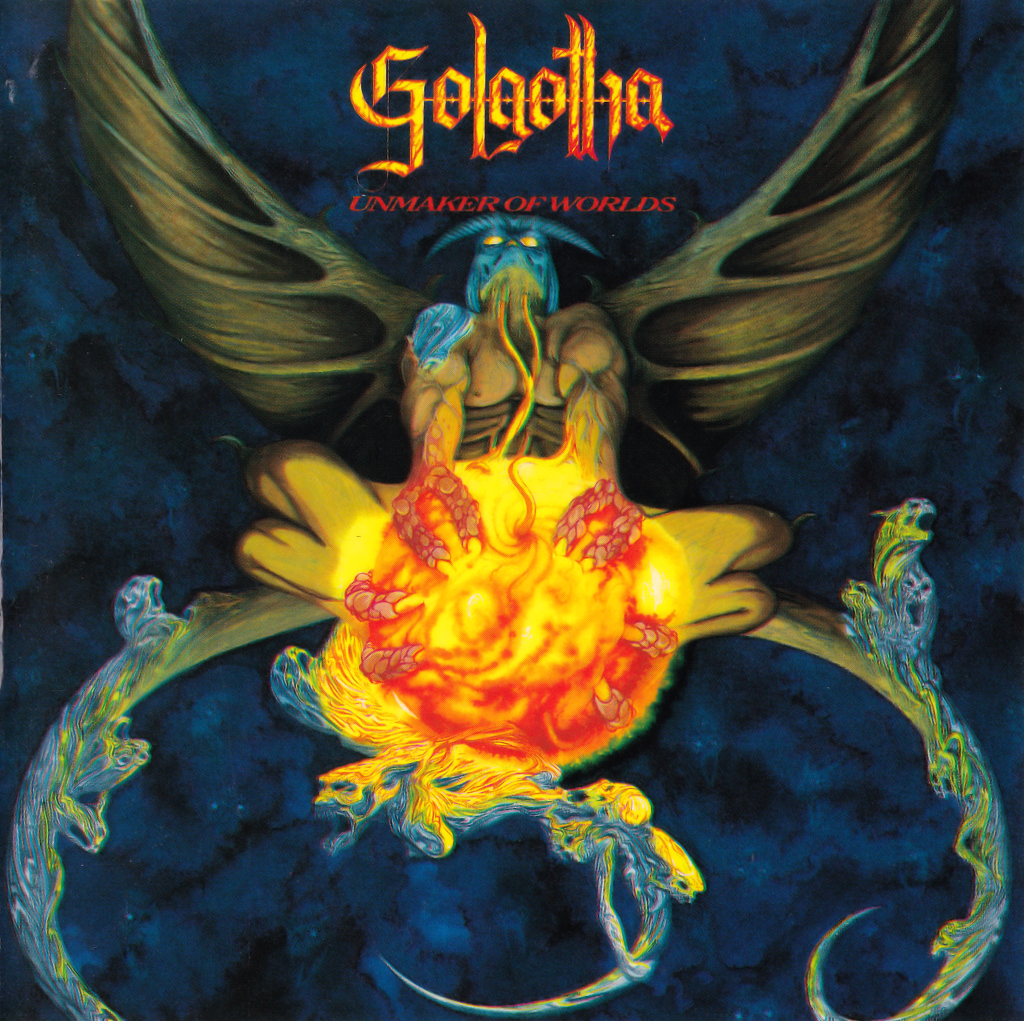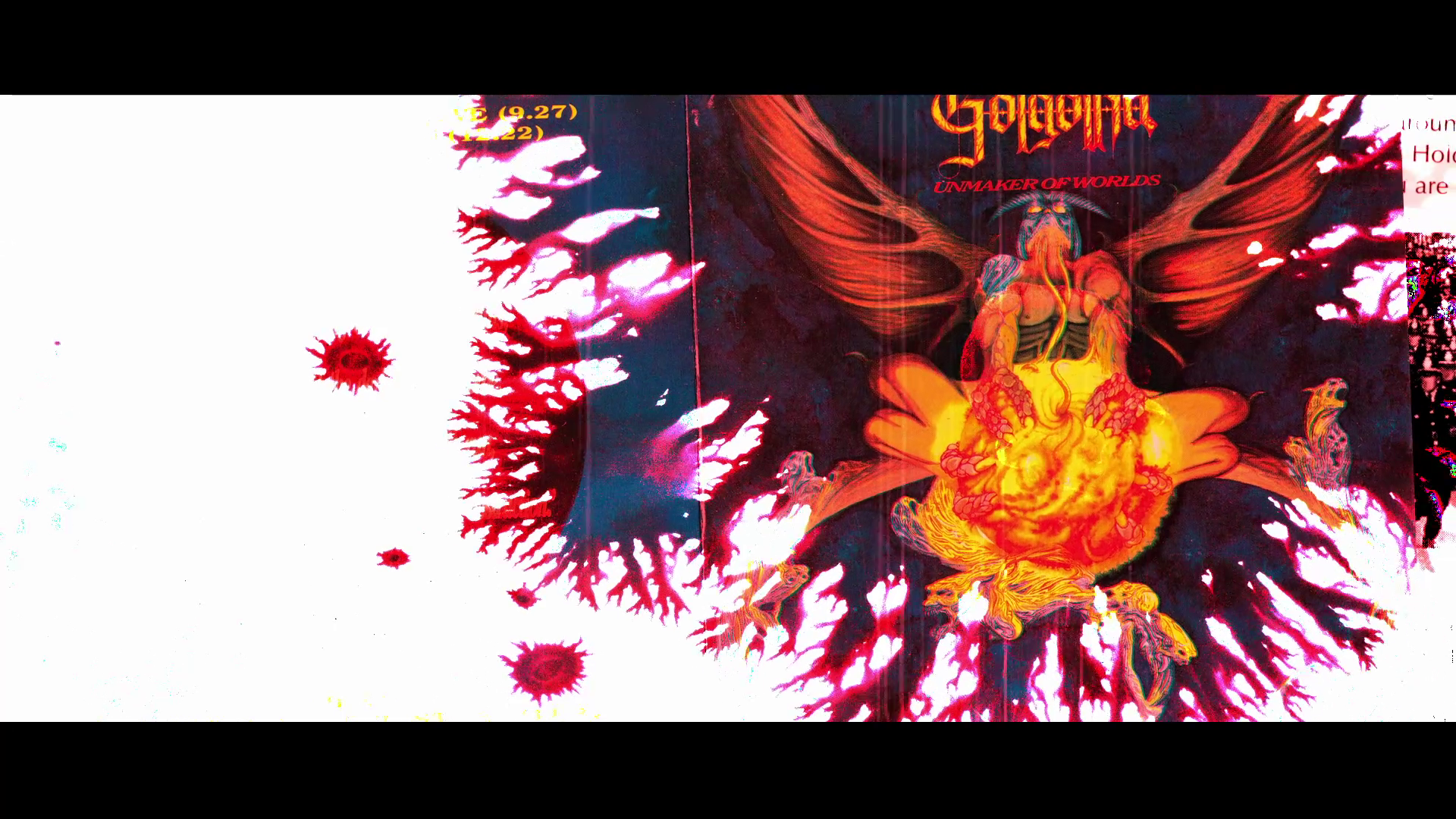Golgotha is signed and releases its first album

Unmaker of Worlds (1990), Communiqué Records CMGCD 003
Golgotha ceased live performances and the band drifted apart, but Karl carried on writing and recording. A huge cash injection from band photographer Carolyn Musgrave, whose lenswork is all over this site, had enabled him to acquire some pretty heavy-duty technology. At least, it was heavy duty for the time.
He’d been programming feverishly for months, exercising his musical muscle on song arrangements impossible to realise with a four-piece live band. In came orchestral backing, sci-fi-esque sequences and synthetic sounds, meshing into works that banged on for up to 10 minutes at a time.
Four finished tracks resulted and were mastered to a demo titled Orchestral Stab – a play on the monicker of a timbre made popular by The Art Of Noise and, says Karl: “I was taking a stab at being an orchestra.”
The demo did the rounds, eventually catching the ear of former Gryphon drummer Dave Oberlé, who was heading up new label Communiqué Records, hosting the likes of metal outfits Samson and Girlschool. He liked what he was hearing, but felt the demo material could do with some pro-studio polish.
Karl and erstwhile drummer Dave were invited to the studio of André Jacquemin, he of Monty Python soundtrack-production fame, where they re-rigged the synths, samplers and SMPTE in a state-of-the-art music production facility, then began to remix and re-master. There were hiccups, including a stereo imaging problem with Karl’s rather ropey Sequential Circuits sampler, and a near disastrous synch-code drop-out from a glitch on Karl’s Fostex tape deck. Cunningly, André fixed it by running the code track through the mixing desk and boosting the gain, describing the Fostex as ‘the world’s biggest auto-cue’. Or ‘bastard thing’, or something.
Album finished, cut to 12-inch vinyl and readied for CD production, the label wanted something stronger for a title, deciding on Unmaker of Worlds. This inspired artist Duncan Storr (see Hawkwind’s Live Chronicles, plus many other album and book illustrations) to devise a striking graphic of a monster devouring the Sun.
Reaction to Unmaker was mixed. Some in the press slated it, but the music scene in 1990 was off in another direction entirely. Nevertheless, fans were keen and somewhat surprised to hear how Golgotha had evolved from hammering metal, folk and experimental musings into a quasi-classical rock phenomenon. A direction to be further explored on the next album, Symphony in Extremis.

